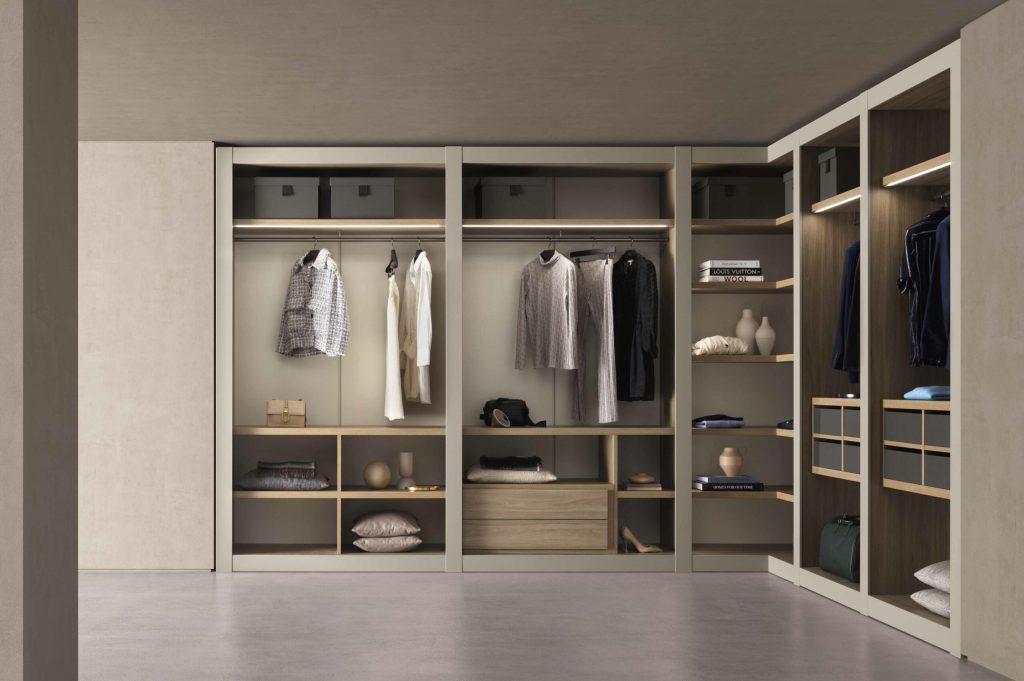Individual Needs & Shared Spaces
Designing a walk-in wardrobe that caters to both partners is a delightful venture that not only fosters organisation but also promotes a harmonious living space. A well-thought-out his-and-hers walk-in wardrobe combines functionality with aesthetics, ensuring that both individuals feel a sense of ownership and ease in their shared space. In this blog post, we will explore key considerations and creative design ideas to help you create the perfect walk-in wardrobe for couples.
Begin by understanding each person’s storage needs and preferences. Take inventory of clothing, accessories, and personal items to determine the necessary hanging space, shelves, and drawers for each partner. This initial step sets the foundation for a customised design that accommodates both individuals. While unity is the goal, it’s essential to incorporate designated spaces for each person’s belongings. Divide the wardrobe into separate sections, ensuring that each partner has their own area for hanging clothes, storing shoes, and organising accessories. This helps maintain a sense of personal space within the shared environment.
Design
Create a balanced design. Opt for a neutral colour palette and balanced design that appeals to both partners. Neutral tones create a timeless and calming atmosphere, while incorporating elements of balance – whether in colour, texture, or layout – ensures that neither partner’s style dominates the space. Find common ground in the design elements to create a cohesive look.

Thinking About What’s Inside
Account for height differences by installing dual height hanging rods. This allows each partner to comfortably access their clothing without compromising on the overall aesthetic of the wardrobe. Longer garments like dresses and coats can hang on taller rods, while shorter rods accommodate shirts and trousers. Designate specific areas for shared items such as linens, towels, and travel accessories. This prevents clutter in individual spaces and promotes a cooperative approach to organising shared belongings. Utilise open shelving for easy access to commonly used items and closed storage for a polished appearance.
Illuminate each space with personalised lighting options. Install individual lights for dressing and grooming areas to cater to different routines and preferences. Consider decorative ceiling or pendant lighting to create ambiance and a focal point within the walk-in wardrobe. Incorporate full-length mirrors to facilitate dressing and outfit assessment for both partners simultaneously. Placing mirrors strategically within the wardrobe enhances the functionality of the space and contributes to a sense of shared utility. If the space is abundant create a cozy seating or lounging area within the walk-in wardrobe. This space serves as a communal area for both partners to discuss outfit choices, share styling tips, or simply relax. A comfortable bench or chairs can transform the wardrobe into a shared retreat within the home.
Conclusion
Designing a his-and-hers walk-in wardrobe requires a thoughtful blend of individuality and shared functionality. By considering the unique needs of each partner, incorporating personalised elements, and fostering a sense of balance in design, you can create a walk-in wardrobe that not only organizes clothing but also enhances the relationship between couples. Remember, the key is to strike a harmonious balance that reflects the individual styles and preferences of both partners while promoting a shared sense of space and organisation.
Want to discuss your walk in wardrobe ideas, or just take that first step on the journey? Send us a message on WhatsApp and one of our friendly team will get in touch.
Why not take a look at some examples of his and hers walk in wardrobes that we’ve created?
Head over and take a look at our Portfolio

